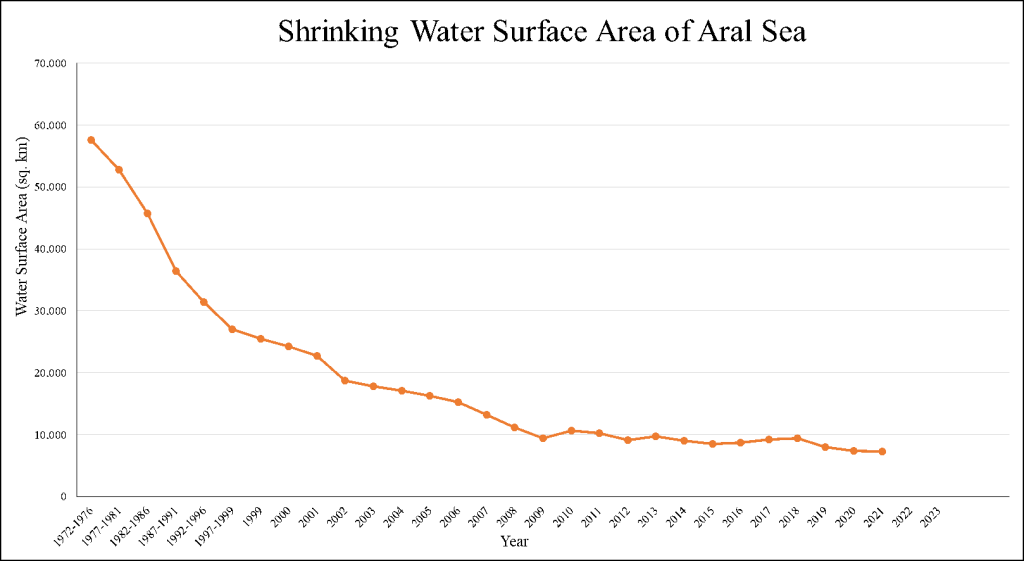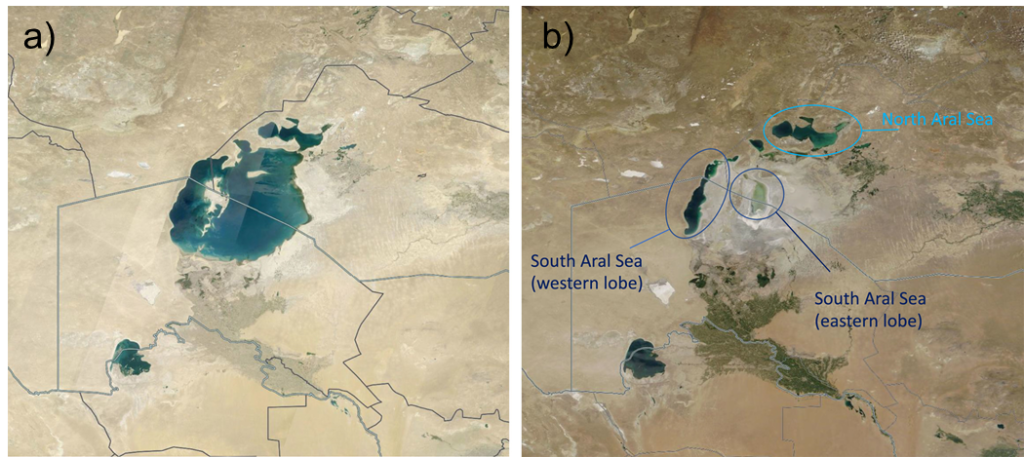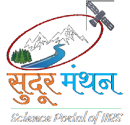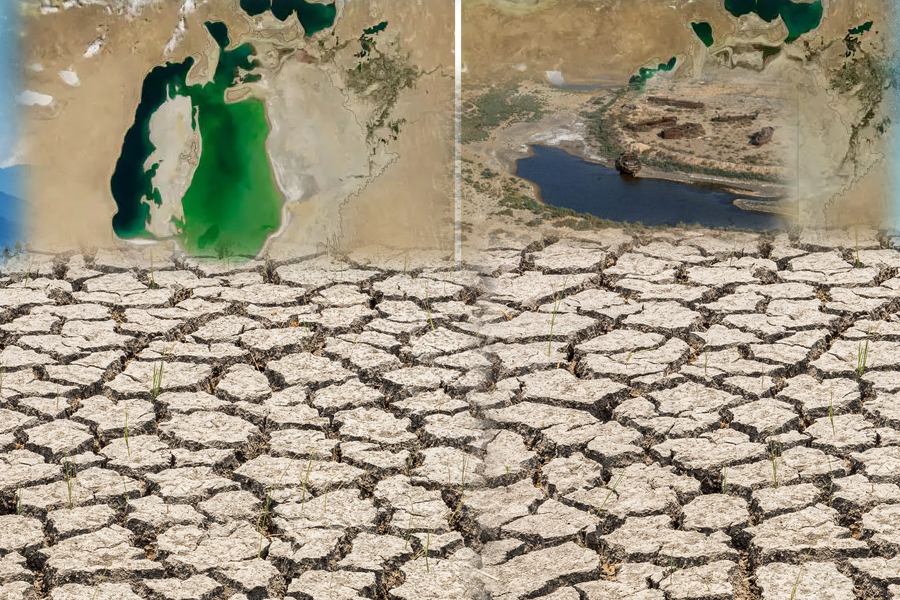Since the 1960s the Central Asian lake that used to be known as the Aral Sea has almost completely dried out, due to human activity. This environmental disaster has created a new desert known as the Aralkum (the “Aral Desert”), which now has a size of 255 km × 255 km across that has appeared since 1960 on the seabed once occupied by the Aral Sea. It is currently the youngest desert in the world. Human activities, particularly damming and irrigation, have been identified as the primary factors driving the long-term shrinkage of the Aral Sea. Figure 2 shows true colour composite satellite images of the Aral Sea taken three decades apart i.e., 1986 & 2015; in the southern part of the Sea, the maximum width in the 1980s was ∼220 km; by the 2010s, the maximum width of the western lobe of the South Aral Sea was ∼30 km.


Figure 1– Shrinking Water Surface Area of Aral Sea.
Dried lakes such as the Aralkum can be very effective sources of wind-driven atmospheric dust. The soils of the Aralkum are also contaminated with agricultural chemicals from nearby croplands, making the Aralkum a major regional threat to human health. Using an atmospheric computer model, the consequences of the new Aralkum were explored for the patterns of atmospheric dust and their potential impacts in Central Asia.

Figure 2: True colour satellite images of the Aral Sea, by Landsat during 1986 (a), and by Terra MODIS on 28 July 2015 (b)
It was found that the new Aralkum has contributed an extra 7% per year to the total dust quantity over Central Asia, however due to thick cloud cover over two thirds of this dust from the Aralkum cannot be seen by Earth-observing satellites. The wind patterns over the Aralkum vary from year to year, so while the simulations predict that most of the Aralkum’s dust is transported to the east during the simulation year, during other years plenty more dust might be transported elsewhere.
References:
Banks, J.R.; Heinold, B.; Schepanski, K. Impacts of the desiccation of the Aral Sea on the Central Asian dust life-cycle. J. Geophys. Res. Atmos. 2022, 127, e2022JD036618.
Pandey, A.C.; Jha, N.K. Central Asia: Democratic deficit and challenges of sustainable development. Journal of Environmental Research and Development. 2007, 1 (4): 403–411.
Rawat, D.; Chouksey, A.; Garg, V. Long term hydrological assessment of Aral Sea basin using geospatial technology. M.Tech. Thesis, 2024, IIRS, Dehradun.



